
The stability of a plasma is an important consideration in the study of plasma physics. When a system containing a plasma is at equilibrium, it is possible for certain parts of the plasma to be disturbed by small perturbative forces acting on it. The stability of the system determines if the perturbations will grow, oscillate, or be damped out.
Electron cyclotron resonance (ECR) is a phenomenon observed in plasma physics, condensed matter physics, and accelerator physics. It happens when the frequency of incident radiation coincides with the natural frequency of rotation of electrons in magnetic fields. A free electron in a static and uniform magnetic field will move in a circle due to the Lorentz force. The circular motion may be superimposed with a uniform axial motion, resulting in a helix, or with a uniform motion perpendicular to the field resulting in a cycloid. The angular frequency of this cyclotron motion for a given magnetic field strength B is given by
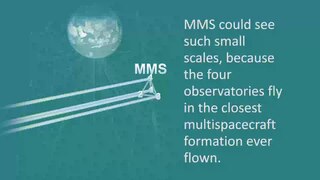
In plasma physics, an Alfvén wave, named after Hannes Alfvén, is a type of plasma wave in which ions oscillate in response to a restoring force provided by an effective tension on the magnetic field lines.
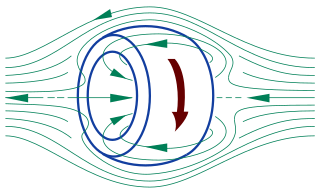
A field-reversed configuration (FRC) is a type of plasma device studied as a means of producing nuclear fusion. It confines a plasma on closed magnetic field lines without a central penetration. In an FRC, the plasma has the form of a self-stable torus, similar to a smoke ring.

An ion trap is a combination of electric and/or magnetic fields used to capture charged particles — known as ions — often in a system isolated from an external environment. Atomic and molecular ion traps have a number of applications in physics and chemistry such as precision mass spectrometry, improved atomic frequency standards, and quantum computing. In comparison to neutral atom traps, ion traps have deeper trapping potentials that do not depend on the internal electronic structure of a trapped ion. This makes ion traps more suitable for the study of light interactions with single atomic systems. The two most popular types of ion traps are the Penning trap, which forms a potential via a combination of static electric and magnetic fields, and the Paul trap which forms a potential via a combination of static and oscillating electric fields.
Fourier-transform ion cyclotron resonance mass spectrometry is a type of mass analyzer (or mass spectrometer) for determining the mass-to-charge ratio (m/z) of ions based on the cyclotron frequency of the ions in a fixed magnetic field. The ions are trapped in a Penning trap (a magnetic field with electric trapping plates), where they are excited (at their resonant cyclotron frequencies) to a larger cyclotron radius by an oscillating electric field orthogonal to the magnetic field. After the excitation field is removed, the ions are rotating at their cyclotron frequency in phase (as a "packet" of ions). These ions induce a charge (detected as an image current) on a pair of electrodes as the packets of ions pass close to them. The resulting signal is called a free induction decay (FID), transient or interferogram that consists of a superposition of sine waves. The useful signal is extracted from this data by performing a Fourier transform to give a mass spectrum.

The Global Geospace Science (GGS) Wind satellite is a NASA science spacecraft designed to study radio waves and plasma that occur in the solar wind and in the Earth's magnetosphere. It was launched on 1 November 1994, at 09:31:00 UTC, from launch pad LC-17B at Cape Canaveral Air Force Station (CCAFS) in Merritt Island, Florida, aboard a McDonnell Douglas Delta II 7925-10 rocket. Wind was designed and manufactured by Martin Marietta Astro Space Division in East Windsor Township, New Jersey. The satellite is a spin-stabilized cylindrical satellite with a diameter of 2.4 m and a height of 1.8 m.

Alcator C-Mod was a tokamak that operated between 1991 and 2016 at the Massachusetts Institute of Technology (MIT) Plasma Science and Fusion Center (PSFC). Notable for its high toroidal magnetic field, Alcator C-Mod holds the world record for volume averaged plasma pressure in a magnetically confined fusion device. Until its shutdown in 2016, it was one of the major fusion research facilities in the United States.
Cyclotron resonance describes the interaction of external forces with charged particles experiencing a magnetic field, thus already moving on a circular path. It is named after the cyclotron, a cyclic particle accelerator that utilizes an oscillating electric field tuned to this resonance to add kinetic energy to charged particles.
Neutral-beam injection (NBI) is one method used to heat plasma inside a fusion device consisting in a beam of high-energy neutral particles that can enter the magnetic confinement field. When these neutral particles are ionized by collision with the plasma particles, they are kept in the plasma by the confining magnetic field and can transfer most of their energy by further collisions with the plasma. By tangential injection in the torus, neutral beams also provide momentum to the plasma and current drive, one essential feature for long pulses of burning plasmas. Neutral-beam injection is a flexible and reliable technique, which has been the main heating system on a large variety of fusion devices. To date, all NBI systems were based on positive precursor ion beams. In the 1990s there has been impressive progress in negative ion sources and accelerators with the construction of multi-megawatt negative-ion-based NBI systems at LHD (H0, 180 keV) and JT-60U (D0, 500 keV). The NBI designed for ITER is a substantial challenge (D0, 1 MeV, 40 A) and a prototype is being constructed to optimize its performance in view of the ITER future operations. Other ways to heat plasma for nuclear fusion include RF heating, electron cyclotron resonance heating (ECRH), ion cyclotron resonance heating (ICRH), and lower hybrid resonance heating (LH).
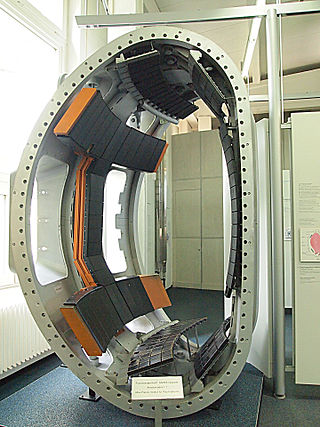
ASDEX Upgrade is a divertor tokamak at the Max-Planck-Institut für Plasmaphysik, Garching that went into operation in 1991. At present, it is Germany's second largest fusion experiment after stellarator Wendelstein 7-X.
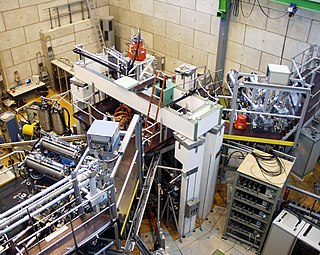
The tokamak à configuration variable is an experimental tokamak located at the École Polytechnique Fédérale de Lausanne (EPFL) Swiss Plasma Center (SPC) in Lausanne, Switzerland. As the largest experimental facility of the Swiss Plasma Center, the TCV tokamak explores the physics of magnetic confinement fusion. It distinguishes itself from other tokamaks with its specialized plasma shaping capability, which can produce diverse plasma shapes without requiring hardware modifications.
An edge-localized mode (ELM) is a plasma instability occurring in the edge region of a tokamak plasma due to periodic relaxations of the edge transport barrier in high-confinement mode. Each ELM burst is associated with expulsion of particles and energy from the confined plasma into the scrape-off layer. This phenomenon was first observed in the ASDEX tokamak in 1981. Diamagnetic effects in the model equations expand the size of the parameter space in which solutions of repeated sawteeth can be recovered compared to a resistive MHD model. An ELM can expel up to 20 percent of the reactor's energy.

The Helically Symmetric Experiment, is an experimental plasma confinement device at the University of Wisconsin–Madison, with design principles that are intended to be incorporated into a fusion reactor. The HSX is a modular coil stellarator which is a toroid-shaped pressure vessel with external electromagnets which generate a magnetic field for the purpose of containing a plasma. It began operation in 1999.

A ball-pen probe is a modified Langmuir probe used to measure the plasma potential in magnetized plasmas. The ball-pen probe balances the electron and ion saturation currents, so that its floating potential is equal to the plasma potential. Because electrons have a much smaller gyroradius than ions, a moving ceramic shield can be used to screen off an adjustable part of the electron current from the probe collector.
High-confinement mode, or H-mode, is an operating regime possible in toroidal magnetic confinement fusion devices – mostly tokamaks, but also in stellarators. In this regime the plasma has a higher energy confinement time.
The Gas Dynamic Trap is a magnetic mirror machine being operated at the Budker Institute of Nuclear Physics in Akademgorodok, Russia.
The Prairie View (PV) Rotamak is a plasma physics experiment at Prairie View A&M University. The experiment studies magnetic plasma confinement to support controlled nuclear fusion experiments. Specifically, the PV Rotamak can be used as either a spherical tokamak or a field-reversed configuration. Some time between 2015 and 2017, most personnel moved on to advanced career opportunities. In 2017, a Final Report to Department of Energy (DOE) was prepared and submitted by Dr. Saganti of PVAMU on the entire research work supported by DOE for 12 years.
Hartmut Zohm is a German plasma physicist who is known for his work on the ASDEX Upgrade machine. He received the 2014 John Dawson Award and the 2016 Hannes Alfvén Prize for successfully demonstrating that neoclassical tearing modes in tokamaks can be stabilized by electron cyclotron resonance heating, which is an important design consideration for pushing the performance limit of the ITER.
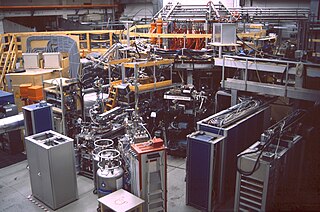
Wendelstein 7-AS was an experimental stellarator which was in operation from 1988 to 2002 by the Max Planck Institute for Plasma Physics (IPP) in Garching. It was the first of a new class of advanced stellarators with modular coils, designed with the goal of developing a nuclear fusion reactor to generate electricity.












